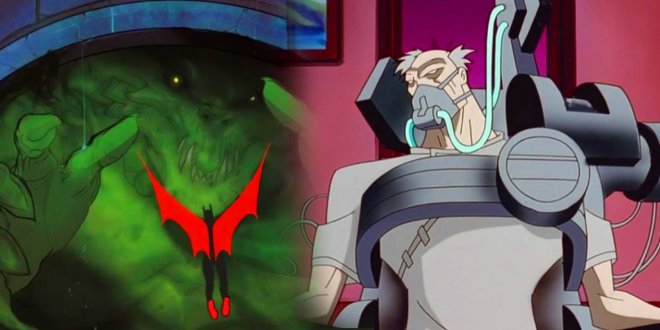
Summary
- Even Batman's no-kill rule led to horrifying fates for some villains, questioning the mercy of death.
- Villains like Clayface, Mr. Freeze, and Joker met gruesome fates due to their own actions.
- Epic showdowns in the animated series ended some villains in dark, tragic ways, showcasing Batman's world's brutality.
Even if Batman himself never directly killed anyone in Batman: The Animated Series, that doesn't mean that all of his villains got away without suffering some terrifying consequences. Known as the best animated Batman show, Batman: The Animated Series is the premiere version of The Dark Knight for many fans. That also goes for his villains, who have gone on to suffer some seriously gruesome fates over the years that make one wonder if it might have been a mercy for Batman to break his famous "no-kill" rule over the course of the series.
Not every Batman villain in the DC Animated Universe has had such a nasty fate. Harvey Dent goes on to receive treatment for his psychosis, and even becomes a movie star, whereas Harley Quinn manages to live to old age, becoming a grandmother. However, some Batman villains went on to suffer fates worse than death as Batman: The Animated Series concluded, usually brought about by their own hubris. Whether depicted in Justice League Unlimited, Batman Beyond, or any number of DCAU tie-in comics, time has not been kind to many original Batman antagonists.
8 Jack Of The Royal Flush Gang Relapses Into Crime One member of the group had a chance at redemption 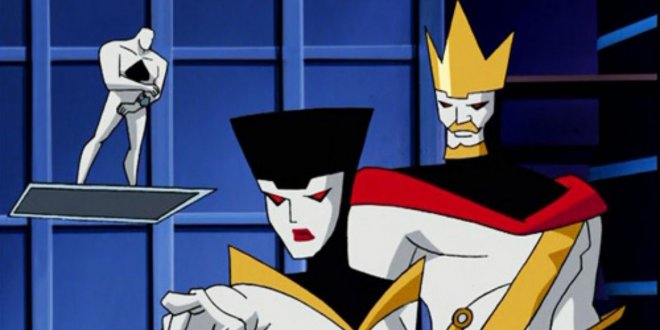 Primarily appearing in Batman Beyond, the Royal Flush gang was a criminal organization of thieves with a playing card theme, each member being named after a face card. Consisting of Ace, Jack, King, Queen, and Ten, the members of the gang initially seemed to have no remorse for their destructive actions, reveling the unbridled joy of wanton cruelty. However, over time, the gang's strength and resolve began to waver, and several members went from a tight-knit band of troublemakers to a dysfunctional found family.
Primarily appearing in Batman Beyond, the Royal Flush gang was a criminal organization of thieves with a playing card theme, each member being named after a face card. Consisting of Ace, Jack, King, Queen, and Ten, the members of the gang initially seemed to have no remorse for their destructive actions, reveling the unbridled joy of wanton cruelty. However, over time, the gang's strength and resolve began to waver, and several members went from a tight-knit band of troublemakers to a dysfunctional found family.
Ten, who's real name is Melanie, goes on to turn over a new leaf after the gang dissolves, going clean with a legit job in the food service industry. Taking the young Jack under her wing, Melanie manages to get him a job at the same restaurant, ensuring that at least two members of the former villain group have completely reformed. Tragically, the Batman Beyond tie-in comic revealed that Jack relapsed into criminal activity, attempting to start his own Royal Flush gang as a new King before being sent to prison.
7 Mr. Freeze Becomes A Literal Head The brilliant scientist struggled with an alternate persona 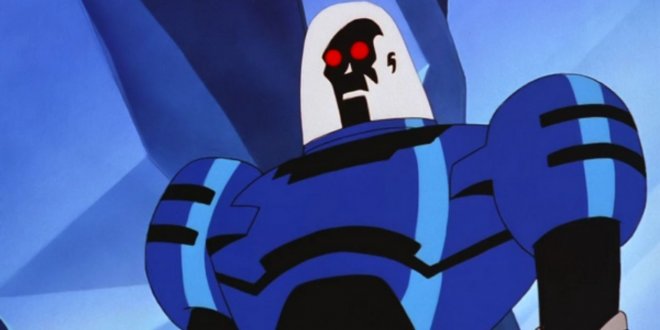 Of all the villains in Batman: The Animated Series, Dr. Victor Fries was always one of the most sympathetic. Batman: The Animated Series re-wrote Mr. Freeze to have a tragic origin surrounding his late wife, Nora, taking him from a dime-a-dozen gimmick villain to a complex anti-hero. By the time of Batman Beyond, it seems as though Mr. Freeze's villaions side had solidified itself into an entire alternate personality, re-emerging in the future after lying dormant in the ice for decades.
Of all the villains in Batman: The Animated Series, Dr. Victor Fries was always one of the most sympathetic. Batman: The Animated Series re-wrote Mr. Freeze to have a tragic origin surrounding his late wife, Nora, taking him from a dime-a-dozen gimmick villain to a complex anti-hero. By the time of Batman Beyond, it seems as though Mr. Freeze's villaions side had solidified itself into an entire alternate personality, re-emerging in the future after lying dormant in the ice for decades.
Gruesomely, Mr. Freeze managed to preserve himself in the far future as a literal head, using his cutting-edge cryogenic technology to far outlive his biological shelf-life. After languishing in the solitude of cold storage for 50 years, Fries was resurrected in the future of Neo Gotham. It seemed as though Victor Fries has been redeemed by his experience, gaining a new cloned body unaffected by his previous condition. Eventually, the suppressed persona of Mr. Freeze reared its ugly head, and the doctor became a cold-hearted machine that the new Batman had no choice but to put down.
6 Clayface Spends Years Trapped Inside An Oil Drum The amorphous menace's powers had a horrifying downside  After over-exposure to the dangerous experimental chemical concoction Renuyu, Matt Hagen becomes Clayface, weaponizing his new colloidal body in a life of crime. One of the most durable of Batman's villains, it's hard to imagine that any permanent damage could be meaningfully done to Clayface's unique biology, able to shrug off conventional attacks and re-form itself with ease. However, it appears as though the nigh-invulnerability of Clayface's amorphous body had some terrifying implications behind it, briefly explored in the Justice League animated series.
After over-exposure to the dangerous experimental chemical concoction Renuyu, Matt Hagen becomes Clayface, weaponizing his new colloidal body in a life of crime. One of the most durable of Batman's villains, it's hard to imagine that any permanent damage could be meaningfully done to Clayface's unique biology, able to shrug off conventional attacks and re-form itself with ease. However, it appears as though the nigh-invulnerability of Clayface's amorphous body had some terrifying implications behind it, briefly explored in the Justice League animated series.
The next time Clayface is seen in the DC Animated Universe, it's in a villainous team-up alongside Gorilla Grodd in an episode of Justice League. Here, it's revealed that Matt spent the last unknown number of years split apart and contained within various biohazard containers, courtesy of the villain Morgan Edge. Finally freed from this maddening prison, Clayface accepts Grodd's rescue, working with him in hopes of finally fixing his condition, only to be blown to bits again by the Flash and Hawkgirl. It's safe to say that Clayface's powers are far more of a curse than a blessing.
5 Talia Al Ghul Becomes Possessed By Her Father Ra's al Ghul is winning no father of the year awards 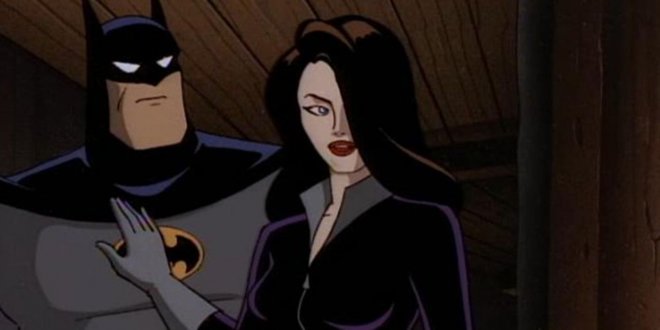 Obsessed with preventing his own death, Ra's al Ghul was known for his use of the Lazarus Pits, which kept him alive despite being hundreds of years old. Though the ancient assassin appears trying to steal Superman's powers in an episode of Superman: The Animated Series, by the time of Batman Beyond, he's never mentioned as a threat, despite his longevity. When Bruce Wayne himself is especially feeling the effects of his old age, Ra's' daughter, Talia, appears before him, offering a dip in the Lazarus Pit to restore his youthful vitality.
Obsessed with preventing his own death, Ra's al Ghul was known for his use of the Lazarus Pits, which kept him alive despite being hundreds of years old. Though the ancient assassin appears trying to steal Superman's powers in an episode of Superman: The Animated Series, by the time of Batman Beyond, he's never mentioned as a threat, despite his longevity. When Bruce Wayne himself is especially feeling the effects of his old age, Ra's' daughter, Talia, appears before him, offering a dip in the Lazarus Pit to restore his youthful vitality.
Talia was being manipulated by the spirit of her late father, who possessed her body in order to lure the original Batman into a trap. In reality, Ra's wanted to hop bodies back into Bruce Wayne's restored younger form. Talie al Ghul was always a little more morally flexible compared to her father, and a love interest for Batman beyond that. She certainly didn't deserve to have her dad possess her body, horrifying close in time to a romantic encounter with her old flame. This ends up being one of the most morbid endings in Batman: The Animated Series history.
4 Poison Ivy Becomes An Immobile Plant In The Rainforest The femme fatale took things to the next level of human evolution  One of the most criminally underused villains in Batman: The Animated Series was none other than the eco-terrorist Poison Ivy. Her abilities in Batman: The Animated Series were far more mundane than in the comics, relying on a combination of pheromones and chemical immunity rather than total control over plant life. By the time of The New Batman Adventures, Poison Ivy seemed to have gotten an upgrade, being closer in power to her original comic incarnation. Even further in the future, and Poison Ivy has deepened her bond with nature to an unthinkable degree.
One of the most criminally underused villains in Batman: The Animated Series was none other than the eco-terrorist Poison Ivy. Her abilities in Batman: The Animated Series were far more mundane than in the comics, relying on a combination of pheromones and chemical immunity rather than total control over plant life. By the time of The New Batman Adventures, Poison Ivy seemed to have gotten an upgrade, being closer in power to her original comic incarnation. Even further in the future, and Poison Ivy has deepened her bond with nature to an unthinkable degree.
Poison Ivy never shows up in Batman Beyond, but Batman: The Animated Series screenwriter and producer Paul Dini had some choice words to say about her ultimate fate. In a magazine interview around the time of Batman Beyond's original airing, Dini claims that Poison Ivy has moved to the Amazon Jungle in South America. Here, she's described as "part of the rainforest," having evolved into a true half-plant, half-human hybrid. Dini may have been joking around in this interview, but the terrifying prospect of being turned into an immobile plant is the closest confirmation of Ivy's ultimate fate ever given.
3 Killer Croc Becomes A Kaiju Living Under Neo Gotham The sewer-dwelling villain ended up becoming a true monster 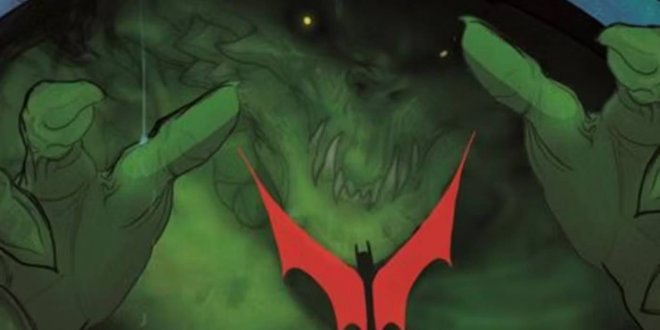 Never the brightest bulb among Batman's cadre of villains, Killer Croc was nevertheless a threatening physical fighter thanks to his toughed skin, enhanced physical strength, and razor-sharp teeth. Mutated to appear reptilian from birth, Killer Croc was a victim of his circumstances, turning to a life of crime after a failed career as a sideshow freak and professional wrestler. It seems as though his rare condition only made Croc more monstrous over time.
Never the brightest bulb among Batman's cadre of villains, Killer Croc was nevertheless a threatening physical fighter thanks to his toughed skin, enhanced physical strength, and razor-sharp teeth. Mutated to appear reptilian from birth, Killer Croc was a victim of his circumstances, turning to a life of crime after a failed career as a sideshow freak and professional wrestler. It seems as though his rare condition only made Croc more monstrous over time.
Killer Croc never appears in the future animated timeline, but a tie-in Batman Beyond comic featuring Killer Croc describes his ultimate fate. In it, Terry McGinnis’ Batman finds a gargantuan Killer Croc barely contained beneath the sewers of Neo Gotham, hardly able to cram himself within the cramped waterways of the city's underbelly. While it's never confirmed exactly how Croc managed to grow to such kaiju-sized proportions, it's unquestionably a horrific fate for the already socially ostracized monstrous supervillain.
2 Bane Becomes A Husk Of A Man Years of venom abuse finally caught up to him 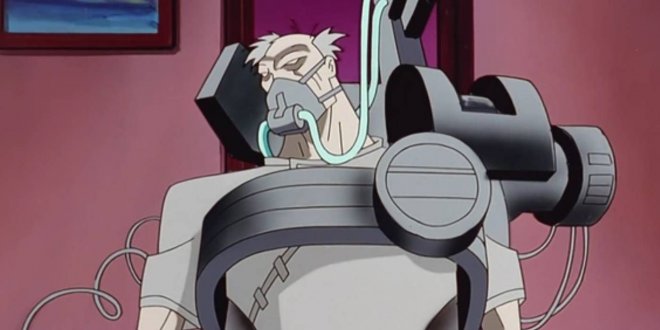 One of the few villains to return in Batman Beyond from Batman: The Animated Series, Bane is far from a threat by the time Terry's Batman is able to meet him. Originally, Bane was one of Batman's most fearsome combatants, using the experimental chemical simply known as Venom to inflate his strength to superhuman proportions. As menacing as this made Bane during the height of his criminal power, it seems as though the years of abusing the volatile drug have had disastrous side-effects.
One of the few villains to return in Batman Beyond from Batman: The Animated Series, Bane is far from a threat by the time Terry's Batman is able to meet him. Originally, Bane was one of Batman's most fearsome combatants, using the experimental chemical simply known as Venom to inflate his strength to superhuman proportions. As menacing as this made Bane during the height of his criminal power, it seems as though the years of abusing the volatile drug have had disastrous side-effects.
By the time Bane is shown again in Batman Beyond, he's nothing more than a frail old man, kept barely alive thanks to a direct line of Venom pumping into his body 24/7. It appears that after using the drug for so long, his body became reliant on it, making his body rapidly crumble apart while requiring a steady influx of the liquid to keep his heart pumping. Bane's fate was first alluded to in Paul Dini's magazine interview before it was ever shown on-screen, meaning that his statements about Poison Ivy's final resting place may be more legitimate.
1 Joker Is Killed, Revived, And Killed Again Batman could never fully escape his true nemesis 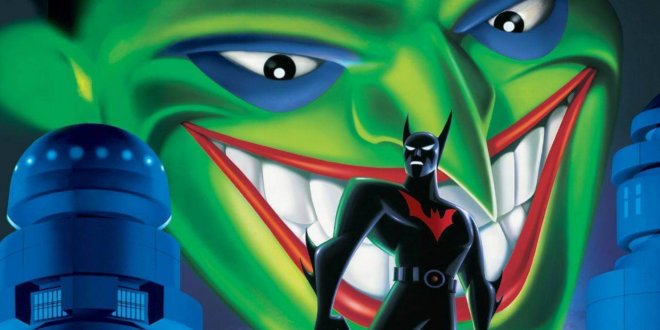 By far the most successful animated version of the Joker, Mark Hamill's electrifying voice work as the Clown Prince of Crime needs little introduction. Shockingly, Batman Beyond had to largely go on without the presence of the malevolent clown in Bruce Wayne's life, with the Joker having been shot by Robin years before the start of the series. But in the animated film Batman Beyond: Return of the Joker, it seems as though even death wasn't the end of his reign of terror.
By far the most successful animated version of the Joker, Mark Hamill's electrifying voice work as the Clown Prince of Crime needs little introduction. Shockingly, Batman Beyond had to largely go on without the presence of the malevolent clown in Bruce Wayne's life, with the Joker having been shot by Robin years before the start of the series. But in the animated film Batman Beyond: Return of the Joker, it seems as though even death wasn't the end of his reign of terror.
In the same incident leading to his death, the Joker managed to transform Robin into a horrifying facsimile of himself, utterly breaking his mind in the process. In doing so, he also implanted a digital version of his consciousness within the boy wonder, activating it years later in order to completely take over his body. The film ends with Joker being shocked by his own joy buzzer, incinerating the microchip and putting an end to the Joker once and for all. One of the few Batman: The Animated Series villains to actually die, Joker certainly didn't get the last laugh.
Key Release Dates
 The Batman Part II Release Date: 2026-10-02 Batman: The Animated Series (1992) DC Extended Universe Close Your changes have been saved
The Batman Part II Release Date: 2026-10-02 Batman: The Animated Series (1992) DC Extended Universe Close Your changes have been saved
Email Is sent
close Please verify your email address.
Send confirmation email close You’ve reached your account maximum for followed topics.
Manage Your List Follow Followed Follow with Notifications Follow Unfollow Popular